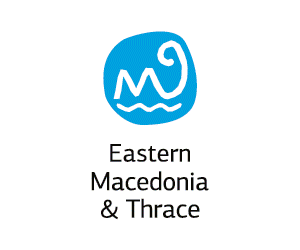Traveler's Guide
East Macedonia & Thrace
Stone Mushrooms - village of Beli plast

The stone mushrooms are symmetrical rock pieces shaped as natural mushrooms, with pink stumps and greenish hoods. The height of the stumps and the width of the cap is 2.5 m. They are shaped from volcanic rhyolitic tuffs . The tuffs which have shaped the stone mushrooms are the result of an intense underwater volcanic activity dating back to the Paleogene. After the sea retreated and the sea bottom rose up, erosion began.The lower pink layer turned out to be softer and more easily succumbed to the effects of sun, wind and rain. The upper green layer contained strong minerals, mostly volcanic glass and took more time to weather. So it took thousands of years to shape this wonderful combination of unique shapes and colors. A huge variety of bird species adds up to the charm and richness of the area. Around the stone mushrooms one can see the rare short- toed Eagle, red-rumped swallow, egyptian vulture and wheatear.
One of the most famous legends about the appearance of the stone mushrooms is associated with a charcoal-burner named Raduil who had four daughters - all of them exquisitely beautiful. They lived in the Perperikon fortress. One sunny morning, they put the buckets of water on their shoulders and went outside the city walls. Suddenly, they saw a large horde of Turkish attackers on the hill behind the river.The girls started running back towards the fortress. A fierce uneven battle ensued. People started running to save themselves. Many men were killed and the majority of women - captured. Among them were the daughters of Raduil. They were brought to the leader of the horde, who was riding a fine horse at a nearby river, so that he could look at them and chose the most beautiful for himself and the rest to sell for slaves. When they approached him, frenzy gripped the hearts of girls. They grabbed whatever they found - trees, stones and began throwing them at the rider. The horse panicked, stood on its hind legs and threw the rider off the horse back.The four girls rushed towards him and tore him apart. Then they disappeared in the nearby forest. The other rider - Omura - realised what had just happened and ran to chase the girls. He reached them when the sun was just about to go down, and lashed out with his yataghan to cut the head of the first one. Once the head touched the ground, it turned into a stone mushroom. He lashed out and hit the other two sisters. The same thing happened. Scared, Omura got off the horse, but before he hit the head of the last girl, she turned to stone as well. Now scared to death, he jumped on his horse and tried to escape, but as soon as he has made his first step, he also turned into a black rock. People still call this solitary rock near the mushrooms - “Karatepe."
The village of Beli plast is known for its healing water.People from all over the world have been flocking in order to get a supply of the healing water, mineralized with zeolite. Natural zeolite, also called clinoptilolite, is an essential mineral. Clinoptilolite of the highest quality is located in the Eastern Rhodopes near the town of Kardzhali. Immersed in water,the minerals eliminate all harmful substances in it, including radioactive contamination. Local people believe that if we take a zeolite stone and put it in a bowl of water,it becomes healing in the morning. Water is ready to drink after filtration. Locals believe that it helps to cure cancer, colitis, gastritis and gastrointestinal upsets as well as to reduce anxiety, insomnia and others. Some experts say that Bulgaria’s natural deposits of this mineral are the richest in the world.All of them are around Kardzhali.
Address
No information available.Contact Information
No information available.





